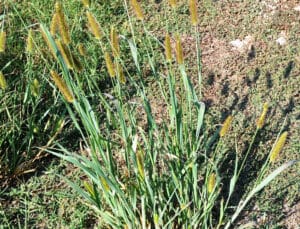Hosta ‘Wide Brim’
Description
The Wide Brim Hosta looks a little like your favorite sun hat, with wide, heart-shaped leaves. Great for adding interest or filling space in a garden, its broad, blue-green foliage is accentuated by a creamy, white-to-light-green edge. Even better? In summer, you’ll see slender spikes of lavender flowers.
Gardeners love this popular Hosta because it adds easy color to shady corners or garden beds. In fact, the Wide Brim Hosta couldn’t be simpler to maintain – it prefers part to full shade and moist soil, but it can adapt to sun as well as to extreme cold. Because it’s so moisture-loving, it’s perfect for planting around water features or ponds in your landscaping.
The Wide Brim Hosta also works perfectly as groundcover or a leafy border, because it’s so well-suited to being planted under taller shrubs or trees. It can add variety between flowering shrubs or ferns, and break up uniform spots. You can even plant it in patio containers to add some green to your outdoor space!
Planting
Ensure you plant your Wide Brim Hosta in shade to partial sun and choose a space with well-drained soil. Dig a hole large enough to accommodate your plant’s root ball, place your plant and backfill the surrounding soil.
For container planting, select a pot that’s about twice the width of your plant’s root ball, place your Hosta, and backfill with organic soil mix.
Watering
Since Hostas love moisture, ensure the soil stays moist, watering weekly and more in times of heat or drought. If your Hosta is container-planted, you’ll also want to water more regularly.
Fertilizing
Pruning
| Growing Information | |
| Mature Height: | 18-24 in |
| Mature Width: | 24-36 in |
| Sunlight: | Full to Partial Shade |
| Bloom Time: | |
| Growth Rate: | Moderate |
| Grows Well in Zones: | 3-9 |
| Your Growing Zone: | 6 |





